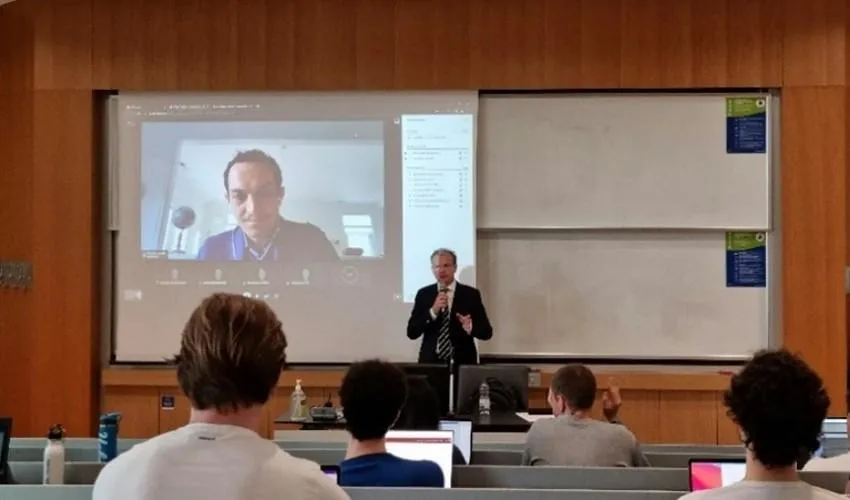
Big Data Liftoff
Space missions are likely to be the most complex enterprises ever designed by humankind. Bocconi students have recently had the opportunity to appreciate how topics such as big data, artificial intelligence, and scientific modeling, which are the focus of many Bocconi researchers, find applications also in space mission planning.
In his lecture at Bocconi University, Dr. Giuseppe Cataldo, the NASA Planetary Protection Lead of the Mars Sample Return Capture, Containment and Return System, illustrated how scientific modeling and artificial intelligence are integrated by NASA scientists and engineers in the design of space missions. The lecture was held as part of the course "Big Data for Business Analytics" directed by Professor Emanuele Borgonovo, Head of the Department of Decision Sciences. Dr. Cataldo described applications of scientific modeling to NASA missions that have made the front page of national and international media, such as the James Webb Space Telescope project. He offered an intense journey through scientific methods for space exploration based on results he has published in the literature. His considerations have spanned from the art of scientific modeling to issues such as how the integration of scientific modeling with machine learning and artificial intelligence allows scientists to run models at increased speed.
Dr. Cataldo started with how scientists use their theoretical knowledge of the involved physical processes and phenomena to build high-fidelity simulators. These simulators have the goal of providing insights into aspects that range from how materials will behave in harsh space conditions, to how different technological systems will operate together. These computer models, due to their sophistication, may have running times of several days, even when implemented on extremely powerful supercomputers. Such long running times challenge the possibility of performing a proper validation of the results of the codes, as well as a proper quantification of the involved uncertainties. However, an integration with machine learning techniques allows a notable reduction in running times and scientists can then apply numerical methods for inspecting the behavior of the code.
"On sensitivity analysis and the application of methods for uncertainty quantification," said Dr. Cataldo, "we are collaborating with Professor Borgonovo to apply novel techniques for addressing the new issues that these complex models generate."
Dr. Cataldo's lecture highlighted the importance of performing sensitivity analysis to gain further insights into these models and to increase their interpretability and explainability. This aspect is transversal across efforts that imply both scientific and machine learning modeling, where it becomes crucial for model predictions to be thoroughly scrutinized before they can be used to support decision-making.